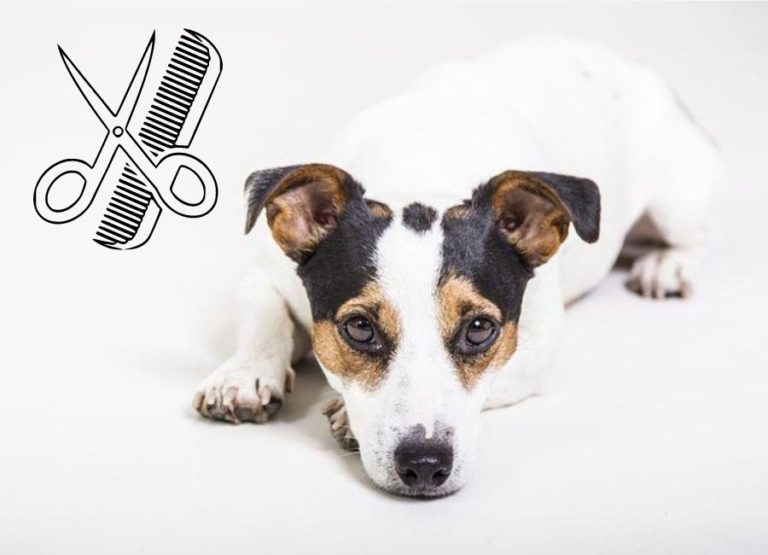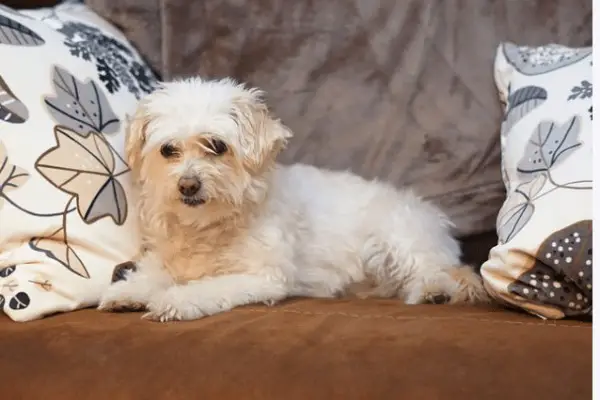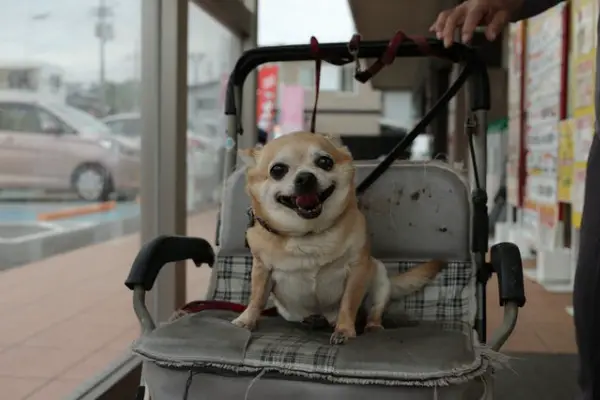What To Do When Dog Growls At Child [Explained]
![What To Do When Dog Growls At Child [Explained] What To Do When Dog Growls At Child](https://petcreeks.com/wp-content/uploads/2022/11/What-To-Do-When-Dog-Growls-At-Child.jpg)
What to do when dog growls at child is exactly what this post will address so keep reading.
If your dog is growling at a child, it can be a scary situation. You may feel like there’s no way to stop the behavior and prevent injury to your pet or even yourself.
However, there are things that you can do in order to make sure this doesn’t happen again and keep everyone safe at home.
The first step is recognizing what’s going on with your dog when they growl at children—and then taking action accordingly!
What To Do When Dog Growls At Child
If your dog growls at a child, it is important to take action immediately.
Dogs may growl for many reasons, but it is often a sign of fear or aggression.
If your dog is growling at a child, it is important to take steps to ensure the safety of both the child and the dog.
If you think your dog is growling out of fear, it is important to slowly and calmly introduce the child to the dog.
Allow the child to pet the dog and give it treats. If the growling continues, it is important to seek professional help.
A behaviorist or trainer can help you to desensitize your dog to the presence of children.
If you think your dog is growling out of aggression, it is important to seek professional help immediately. An aggression specialist can help you.
Why do dogs growl at children?
Here are some common reasons why dogs growl at kids:
- Dogs growling at kids may feel threatened or defensive because they feel outnumbered or are protecting their territory.
- Dogs may also growl when they are trying to assert their dominance over their human or animal companion.
- Poor socialization
- Dogs may also growl when they are trying to tell their human or animal companion to stop bothering them.
- Lack of enough human interaction
- Dogs may growl when they are trying to warn others of danger.
- Dogs may growl when they are trying to communicate their displeasure.
- Lack of mental stimulation activities.
- Dogs may growl when they are trying to get attention.
- Dogs may growl when they are trying to protect their family or pack.
Things To Do When A Dog Growls At Child
Here are some common things to do when your dog growls at a child:
Try to identify why your dog is growling
Is it because the child is being aggressive or is it because the child is attempting to play with the dog?
If the dog is growling at the child because the child is attempting to play with the dog.
Then the child should be taught not to pet the dog in a way that makes the dog growl and the dog should be taught not to play too rough with the child.
Remove the dog in an uncomfortable situation
If your child or you are nervous about something, your dog will be too.
If the situation makes them uncomfortable, and they start growling at the child, don’t force them to do it.
Don’t force your dog to do something that makes them uncomfortable.
It’s better for everyone if you can avoid this sort of situation altogether by simply avoiding situations that might cause stress or anxiety in your pet.
If your dog is constantly getting in trouble and causing problems in your life, there is a good chance that he is not getting the attention and love he needs.
One way to get your dog to stop getting in trouble is to remove him from uncomfortable situations.
If your dog is constantly getting into fights or is constantly getting into trouble with other dogs, you may need to remove him from the situation.
This can be done by taking him to a park or a place where he can play without getting into trouble.
If your dog is constantly getting into arguments with you or is constantly getting into your things, you may need to remove him from your home.
Take it slow and easy when the dog growls at a child
When introducing your dog to other children, make sure you are comfortable with the situation before bringing in the kids.
If you have not had time to teach them how to be safe around dogs or even just have a general idea of what they should do when interacting with dogs, then this could cause problems for everyone involved.
Always take things slow when introducing puppies into homes where there are young kids around.
You want all parties involved in this process (parents and child) to feel comfortable and confident about each other’s abilities before allowing them too much interaction together at once!
Be present and aware when you’re with children and your dog
Be present when you’re around kids and make sure that everyone involved feels safe during these interactions by keeping things calm while at home or out in public places where children may encounter them regularly.
Ask your vet if there’s anything they can do to help your dog feel more comfortable around children, or if it is possible that the dog has an underlying medical problem.
When a dog growls at a child make sure you never leave both of them alone at any point.
Always keep a close watch.
Ask your vet for advice
If your dog growls at your child, you should speak to your vet.
The vet will help you understand what is going on and may be able to provide some insight into why it’s happening.
He or she can also give advice on how to fix the problem and even offer suggestions for dealing with future problems if they occur.
In addition, a good vet will know how best to handle these situations so that everyone stays safe and happy in their home environment!
The vet will also rule out any underlying health conditions that may lead to such behavior.
Never ever leave a child alone with a dog
A child could be unpredictable, and the dog may not know how to react.
Children might not understand the consequences of their actions, or they might not know how to handle a dog safely.
They might even be afraid of dogs in general!
This is why it’s important to teach your child how to read their body language so that you can tell if something is wrong before it gets too late.
Leaving your child and a dog growling at them is not a good idea.
Teach children to respect the dog’s space
When it comes to dogs, it is important to teach children how to respect their space.
This means that children should not pull on or try to pet dogs without first asking, and they should not approach a dog that is eating or sleeping.
Children should also be aware of the fact that some dogs may be shy or have a fear of people, and they should never force a dog to do anything it is not comfortable doing.
By following these simple guidelines, children can help to ensure that all dogs feel comfortable and safe in the neighborhood.
Teach children not to tease the dog
Teach your children not to tease the dog. Dogs are social animals that enjoy being around people and other animals.
When your child teases the dog, they are not only making the dog feel uncomfortable, but they are also teaching their children that it is okay to tease others.
This type of teasing behavior can lead to other problems, such as teasing other people and animals, bullying, and even animal cruelty.
It is important to teach your children not to tease the dog.
Because it will not only make the dog feel uncomfortable but will also teach them valuable lessons about being respectful to others.
Teach children not to feed the dog
As parents, we are constantly trying to teach our children the importance of not feeding the dog without us.
Unfortunately, sometimes they don’t listen and feed the dog anyways.
This can lead to problems such as the dog getting overweight or becoming aggressive.
There are a few things that we can do to help our children not feed the dog without us.
First, we can make sure that they know not to feed the dog at all if we are not around.
If they do happen to feed the dog, we can make sure that they hand-feed the dog instead of giving it food from a bowl.
Know your dog’s limits
Knowing your dog’s limits is key to preventing injuries. If you’re not sure what your dog can and can’t do, ask a veterinarian.
When you first get a dog, you are excited to have a new friend. However, you also need to be aware of your dog’s limits.
For example, your dog may be excited to greet a new person, but may not be comfortable being handled.
Similarly, your dog may be eager to run around, but may not be able to handle a long walk.
It is important to know your dog’s limits so you can provide the best possible care for him or her.
By understanding your dog’s limits, you can also help him, or her stays safe and healthy.
Teach children how to interact safely with dogs
Teach children how to interact safely with dogs. When you’re out and about, your child should always be on the lookout for any type of dog that might approach him or her.
If you see a dog in your neighborhood, tell your child not to approach it unless he/she knows the owner.
This can be difficult for some children because they may want to meet new friends or even play with them.
However, playing games with strangers is dangerous and could lead to more serious injuries than just scaring off those dogs!
If there are no other options available (like walking by yourself), teach your child how much space needs to separate from both animals and people so that neither party feels threatened by another individual nearby.
Teach your child how to play with their dog
Start by teaching your child and your dog how to say “sit” and “stay.”
Have them practice these commands with you before letting them play with their dog.
Next, have them practice walking their dog on a leash and handing the leash to you when they want their dog to stop.
Finally, have them practice playing fetch with their dog.
Have them throw the toy and tell their dog to “take it.” Make sure to praise them when they do a good job.
Hire a trainer
This is the best way to learn how to handle your dog and child together, which will help you both understand each other better.
A professional can also help you teach your child how to interact with your dog safely.
As well as teach them some dog behavior techniques that may be helpful in future interactions with other dogs or people (if applicable).
Signs a dog is uncomfortable with a child
- The dog growls, snaps, or barks when the child is nearby.
- The dog shows signs of being tense or anxious when around the child.
- The dog avoids being in close proximity to the child.
- The dog engages in abnormal behavior such as chewing on furniture or hiding.
- The child has to be very careful when approaching the dog to pet it.
- The dog has a generally negative attitude toward the child.
Puppy growling at a child when sleeping
Puppy growling at a child when sleeping is a common problem that can occur in any type of household.
Growling at a child when they are trying to sleep can be incredibly disruptive and can cause them to feel scared and insecure.
If growling is happening frequently, it may be a sign that there is a more serious issue at hand.
If you are experiencing this type of problem, it is important to seek out help from a veterinarian or a behavior specialist.
Conclusion
Growling is your dog’s way of telling you something is wrong so pay attention to what they’re trying to tell you.
It’s not their fault if you don’t understand them or if they can’t tell you what the problem is.
The best way for both of you to learn how each other communicates is through training and practice but in the meantime
If you want to avoid any problems with your dog growling at children, make sure to keep them safe and teach them how to interact with dogs.
It’s also important to remember that dogs are still animals, and they have their own instincts, so don’t take it personally if they’re going against your wishes.

![How to Prevent Ear Infections in Dogs [15 Helpful Hints] How to Prevent Ear Infections in Dogs](https://petcreeks.com/wp-content/uploads/2023/09/pexels-mikhail-nilov-7474856.jpg)

![Why Does My Beagle Shake [8 Reasons & Tips] Why Does My Beagle Shake](https://petcreeks.com/wp-content/uploads/2021/04/dog-5206460_640.jpg)


